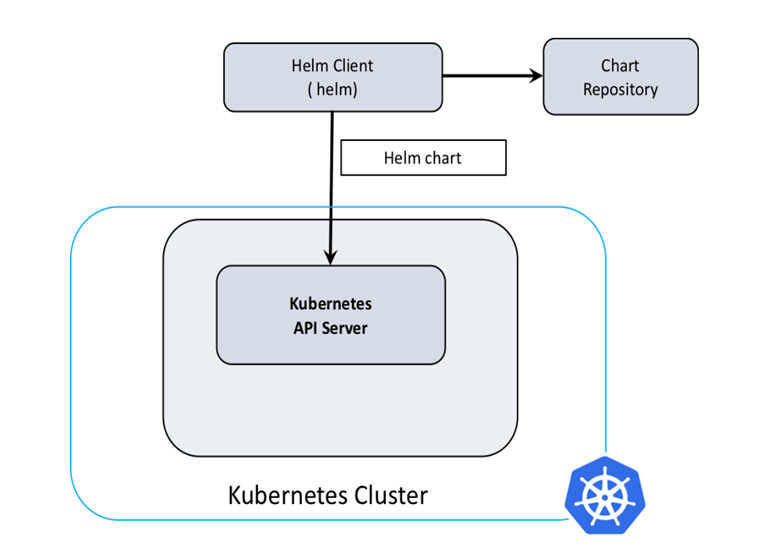Introduction

Helm, the stalwart package manager for Kubernetes, boasts a robust architecture designed to streamline the deployment and management of applications in containerized environments. Let's embark on a journey to unravel the architecture of Helm, dissecting its components and uncovering their significance in the Kubernetes ecosystem.

Helm Architecture Overview
At its core, Helm consists of several key components working in harmony to simplify the deployment process:
Helm Client: The Helm client is the primary interface through which users interact with Helm. It provides a command-line interface (CLI) for managing charts, including tasks such as installing, upgrading, and deleting releases.
Charts: Charts are the fundamental building blocks of Helm packages. They consist of a collection of files—such as Kubernetes manifest files, templates, and metadata—packaged together to define an application and its dependencies. Charts enable users to package, version, and share applications in a standardized format.
Repositories: Helm repositories serve as centralized locations for storing and sharing charts. Users can publish their charts to repositories or leverage existing repositories maintained by the Helm community. Repositories simplify the process of discovering and distributing charts, promoting collaboration and reusability.
Understanding the Components
Now, let's delve deeper into each component and explore how they contribute to Helm's functionality:
Helm Client:
Installation and Configuration: The Helm client can be easily installed on local workstations or within CI/CD pipelines. It simplifies the configuration of Kubernetes clusters and provides a unified interface for managing charts and releases.
Chart Management: Users can use the Helm client to search for, fetch, and inspect charts from repositories. The client also facilitates the installation, upgrading, and deletion of releases, providing a streamlined experience for managing applications.
Charts:
Packaging Applications: Charts encapsulate applications into reusable, versioned packages, simplifying the distribution and deployment of Kubernetes applications.
Customization and Templating: Charts support templating languages (e.g., Go templates) that enable users to customize configurations and parameters at deployment time. This flexibility allows for the creation of generic charts that can be tailored to specific environments.
Repositories:
Discoverability: Helm repositories provide a centralized hub for discovering and sharing charts, fostering collaboration and community-driven development.
Versioning and Dependency Management: Repositories support versioning of charts, allowing users to track changes and dependencies over time. This promotes consistency and facilitates the management of application dependencies.
Conclusion
The architecture of Helm is a testament to its design philosophy of simplicity and extensibility. By leveraging a client-server model (before Helm v3) and adopting standardized components such as charts and repositories, Helm empowers users to package, distribute, and manage Kubernetes applications with ease. Understanding the intricacies of Helm's architecture equips users with the knowledge to harness its capabilities effectively, facilitating seamless application deployment in Kubernetes environments.